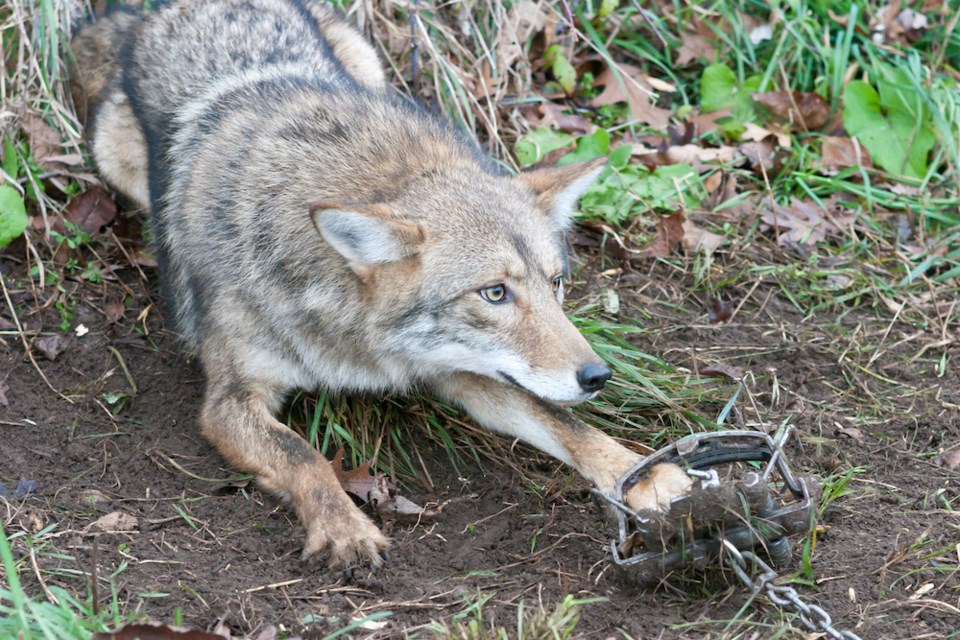Following a series of coyote attacks on park goers, the BC Conservation Officer Service (BCCOS)
But they stopped short of saying exactly how the resident wild canines were captured.
Fire engine-red signage in the sprawling park alerted passersby to "keep away" due to "live coyote traps."
But what exactly are "live coyote traps"?
B.C.’s Ministry of Environment and Climate Change Strategy Senior Public Affairs Officer Andrew Patrick tells Vancouver Is Awesome that conservation officers used "soft foot-hold traps" to catch the coyotes.
Soft foot-hold traps are still legal in every province and territory in Canada. And while they aren't meant to pierce an animal's skin, the traps pose several issues to wildlife.
'This can be likened to slamming your hand in a car door with a thin glove on.'
Lesley Fox, Executive Director of The Fur-Bearers, a charitable organization that works to end the commercial fur trade, tells V.I.A. that she's well-versed with traps used to catch wild animals. For coyotes, it's typically a "Standard No. 3 trap."
The so-called ‘padded’ trap clamps onto an animal’s leg with enough power to hold an adult wolf. The only difference between a padded trap and a regular steel-jawed leg-hold trap is a strip of synthetic nylon lining the powerful steel jaws.
"This can be likened to slamming your hand in a car door with a thin glove on," she says.
Fox feels the park signage misleads people, as most of them don't realize that the coyotes endure this type of pain. Instead, she notes that people often think they will go into those "big box cage traps" rather than leg-hold ones.
"So it's a real manipulation of words," she explains. "They manipulate words to conjure up an image that this is somehow humane."
For Fox, these traps are anything but humane: "Leg-hold traps are completely indiscriminate. You get what you get."
What does she mean by that?
Anything that touches the centre of the trap may trigger the spring. In other words, a bird, squirrel, rabbit, vole or any other park inhabitant could end up getting caught. However, small animals such as squirrels would be killed. People could also step on the traps, too.
For coyotes, the more they struggle, the greater the chance they'll suffer serious injuries. "Individuals respond differently...some coyotes might lay down and it's not a big deal...some will absolutely freak out."
Fox says that the BCCOS has installed trail cameras on the track to minimize the time each coyote spends in each trap, "but at the end of the day that doesn't really mitigate my concerns."
"If you would have a squirrel touch a number three trap they would be killed or maimed."
How did they determine what coyotes were involved in the attacks?
Fox notes that conservation officers wouldn't have been able to determine which coyotes were involved in all of the attacks. In a Tweet, the BCCOS says one of the "coyotes was captured in very close proximity to the site of the recent attack."
Public officials respond by killing animals in the name of public safety — but it's a false sense of reassurance, she says.
The Stanley Park Ecological Society website tells park visitors never to feed coyotes and to shout, wave their arms or throw rocks or dirt near the animals if they appear curious or begin to approach.
V.I.A. asked the BCCOS for comment and will update the story.
With files from Cameron Thomson and the Canadian Press.

.png;w=120;h=80;mode=crop)

